Ancient Psychedelia: Alien Gods & Mushroom Goddesses
Online Book - Chapter 11, Page 208
Back to Online Book Mainpage / Next Page (Chapter 11, Page 209)
Of the few depictions of Chiron that exist, we get an odd occultation of the mushroom in the dress of Naamah/Chariklo, whom Chiron is attempting to court, depicted on a vase c. 600 BC (72a). Only the trained eye would ever see such a mushroom image independent of the dress. These images are all over the internet, but hardly anyone ever notices them. The other mushroom depiction of Chiron comes to us from the Chartres cathedral (1194-1220 AD), where numerous mushroom images exist (72b). We can see by Roman times, Centaurs had been turned into grape harvesters on a capital from 12th-century Mozac Abbey in the Auvergne, while the base of the grapevine could be seen to be a mushroom (72d).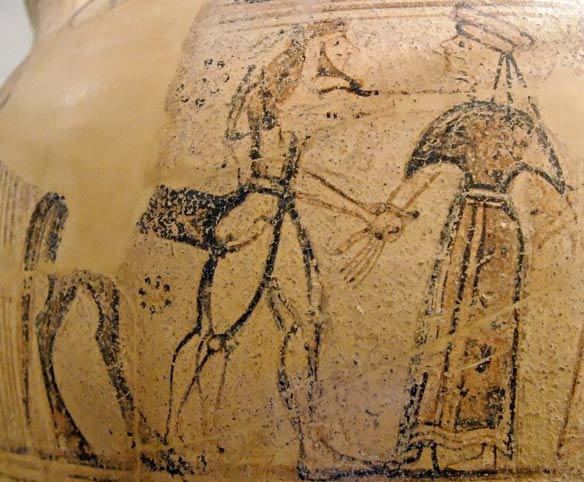 (72a) Vase with Ham/Chiron grasping the wrist of Naamah/Chariklo, a sign in ancient Greek art that she is to be his bride c. 600 BC 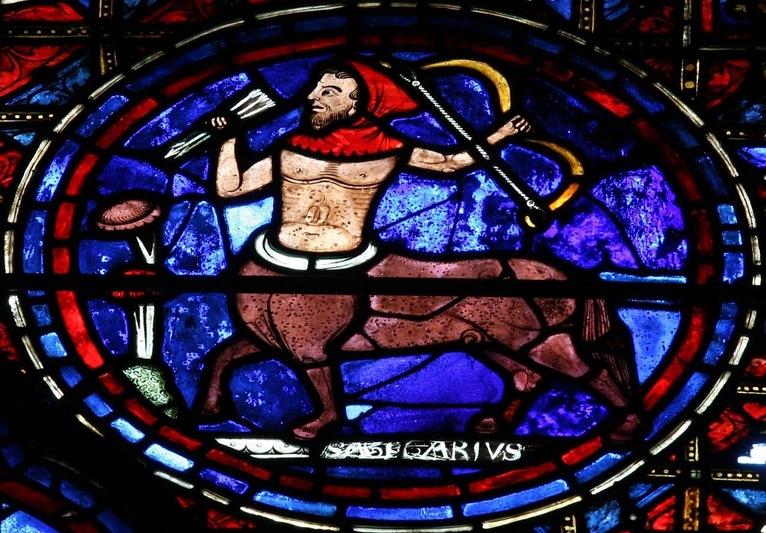 (72b) Chiron depicted in the Chartres Cathedral c. 1194-1220 AD 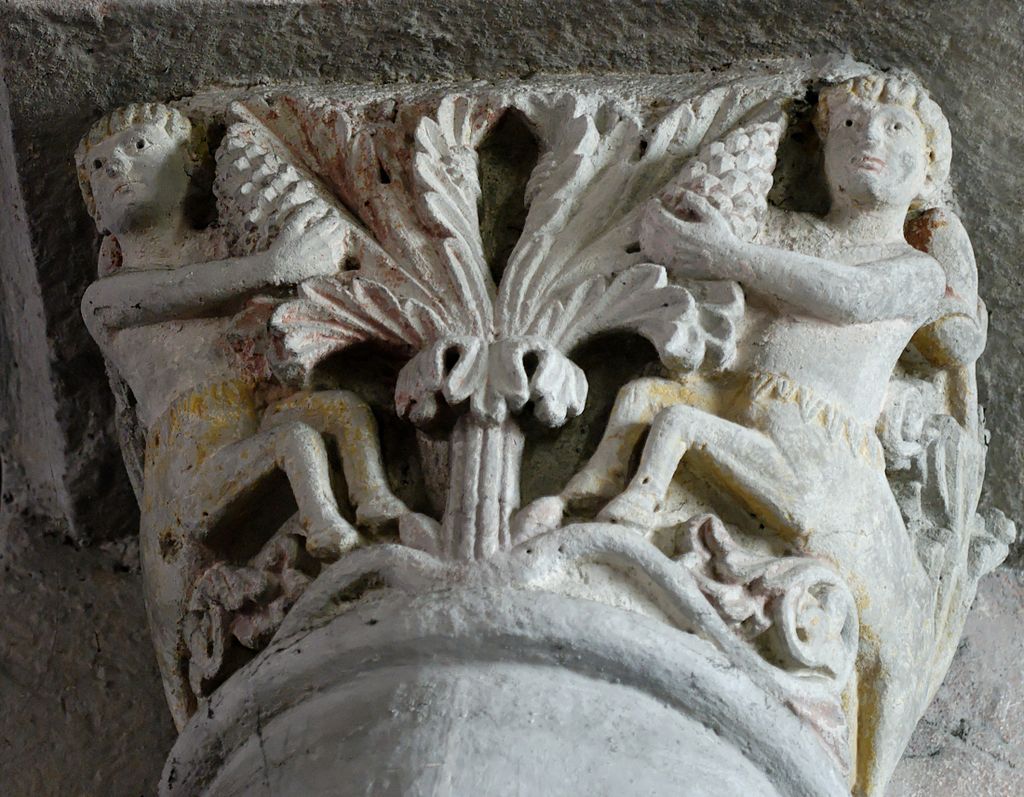 (72d) Centaurs harvest grapes on a capital from the Mozac Abbey in the Auvergne c. 1100-1200 AD |
Ascelpius and the Healing Shrines Asclepius, (Latin Aesculapius) the Greek god of medicine and healing, who holds the caduceus, was also a god of healing waters or springs. (205) Asclepius’s symbol was a single serpent entwined around a staff which eventually became the double serpent symbol of the caduceus, also held by Hermes (43d, e). In the Homeric poems which refer to him, he appears to be a mortal man, and not actually a deity or god. He was said to be descended from Apollo or Peeon. He was usually depicted with a beard, seated on a throne, holding a staff with a serpent coiled around it and he is usually accompanied by a variety of animals including a dog, a cock, a goat’s head and sometimes a pine-cone or omphalos. At Sikyon, the statue built by Kalamis was made of ivory and gold, and portrayed a beardless deity holding a scepter in one hand and a pine cone in the other. The pinecone of course, being a symbol for the mushroom through its association with the pine tree. Depictions of Asclepius in the ancient world include a stele of Asclepius and Hygieia, with a serpent next to a column which looks strikingly similar to a mushroom (43a), a stele from Domitian Square, Ephesus, Turkey c. 100 AD, showing a caduceus with a cup at the top which has the typical mushroom cap veil striations we commonly see (43b), and in another instance the serpent appears to be drinking from the cup (43c). 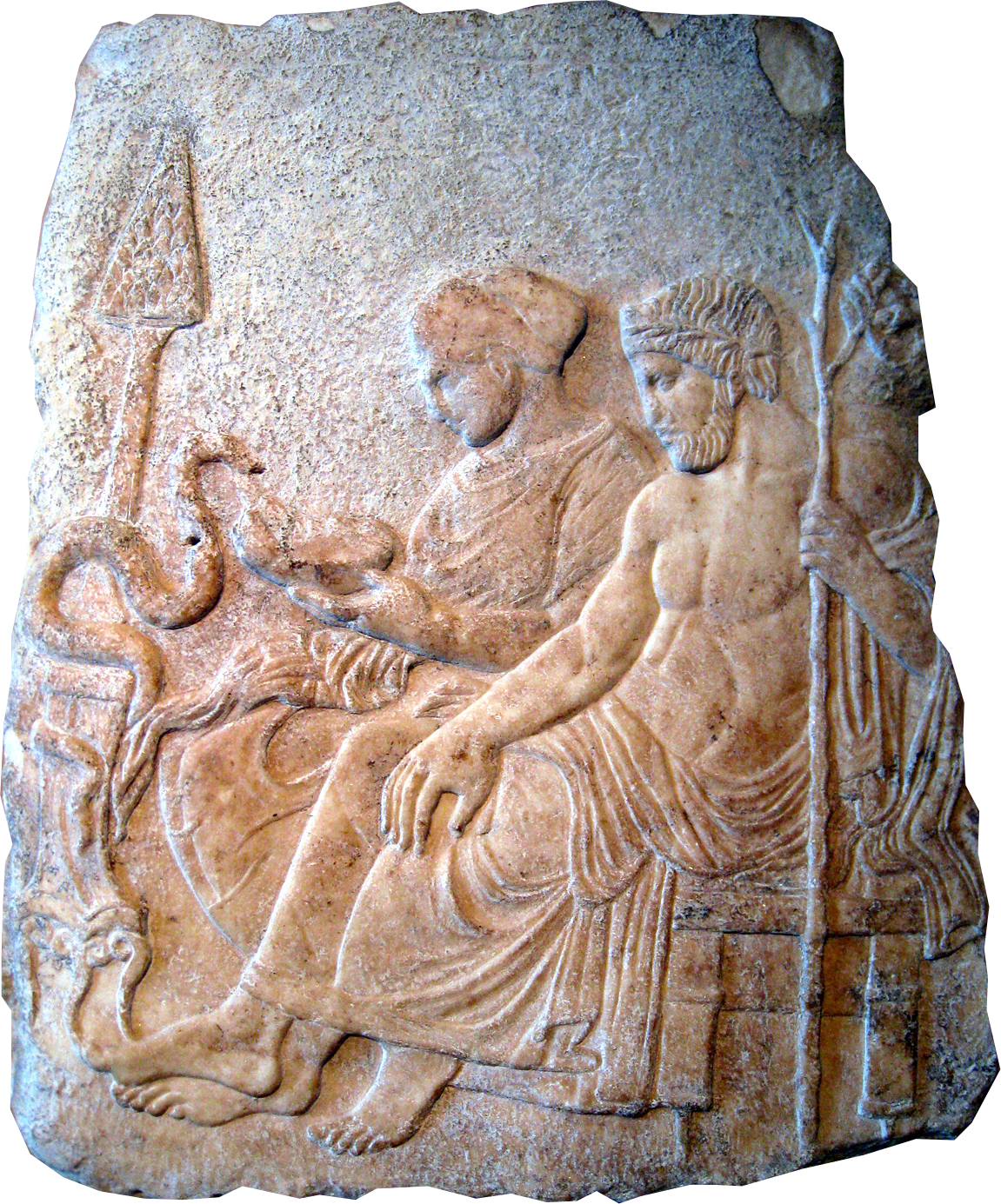 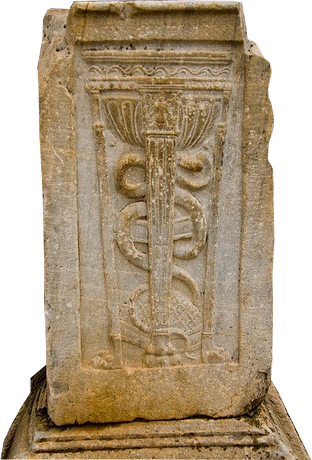 R: (43b) Asclepius symbol at Domitian Square Ephesus, Turkey c. 100 AD 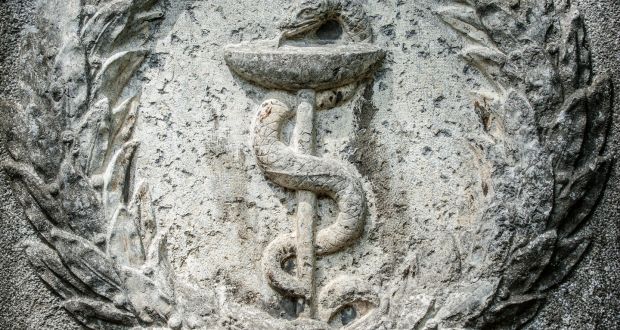 (43c) Caduceus, Symbol of Asclepius (205) Mythology and Symbols, p. 169 |
Go Back to Page 207